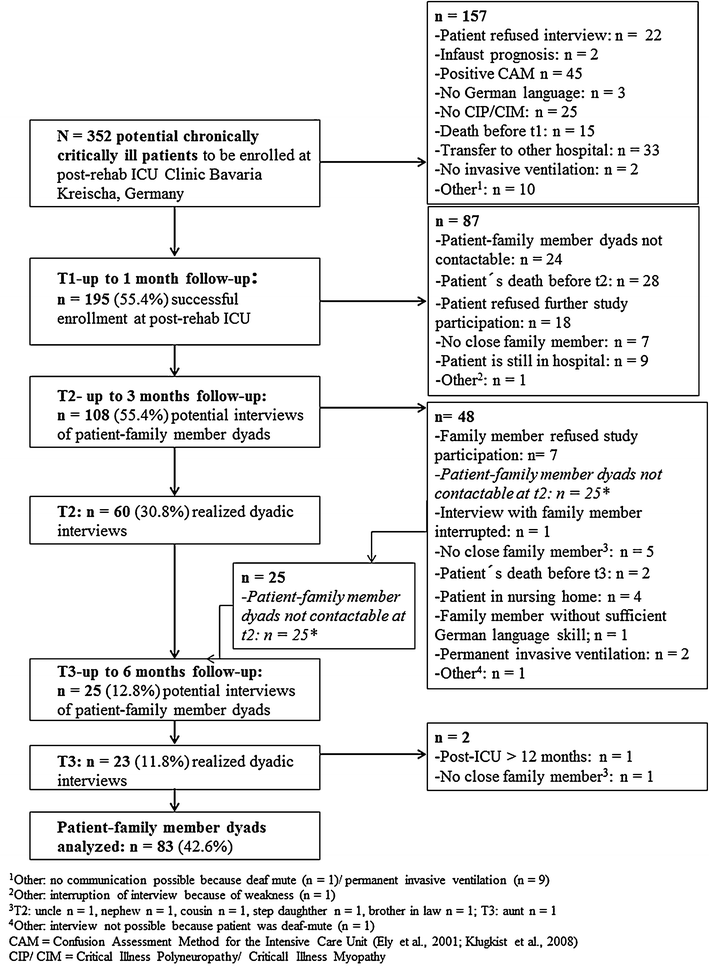Predictors of posttraumatic stress and quality of life in family members of chronically critically ill patients after intensive care
- PMID: 27439709
- PMCID: PMC4954797
- DOI: 10.1186/s13613-016-0174-0
Predictors of posttraumatic stress and quality of life in family members of chronically critically ill patients after intensive care
Abstract
Background: Prolonged mechanical ventilation for acute medical conditions increases the risk of chronic critical illness (CCI). Close family members are confronted with the life-threatening condition of the CCI patients and are prone to develop posttraumatic stress disorder affecting their health-related quality of life (HRQL). Main aim of the present study was to investigate patient- and family-related risk factors for posttraumatic stress and decreased HRQL in family members of CCI patients.
Methods: In a cross-sectional design nested within a prospective longitudinal cohort study, posttraumatic stress symptoms and quality of life were assessed in family members of CCI patients (n = 83, aged between 18 and 72 years) up to 6 months after transfer from ICU at acute care hospital to post-acute rehabilitation. Patients admitted a large rehabilitation hospital for ventilator weaning. The Posttraumatic Stress Scale-10 and the Euro-Quality of life-5D-3L were applied in both patients and their family members via telephone interview.
Results: A significant proportion of CCI patients and their family members (14.5 and 15.7 %, respectively) showed clinically relevant scores of posttraumatic stress. Both CCI patients and family members reported poorer HRQL than a normative sample. Factors independently associated with posttraumatic stress in family members were the time following ICU discharge (β = .256, 95 % confidence interval .053-.470) and the patients' diagnosis of PTSD (β = .264, 95 % confidence interval .045-.453). Perceived satisfaction with the relationship turned out to be a protective factor for posttraumatic stress in family members of CCI patients (β = -.231, 95 % confidence interval -.423 to -.015). Regarding HRQL in family members, patients' acute posttraumatic stress at ICU (β = -.290, 95 % confidence interval -.360 to -.088) and their own posttraumatic stress 3 to 6 months post-transfer (β = -.622, 95 % confidence interval -.640 to -.358) turned out to be significant predictors.
Conclusions: Posttraumatic stress and HRQL should be routinely assessed in family members of CCI patients at regular intervals starting early at ICU. Preventive family-centered interventions are needed to improve posttraumatic stress and HRQL in both patients and their family members.
Keywords: Chronic critical illness (CCI); Family members; Health-related quality of life (HRQL); Intensive care; Post-intensive care syndrome (PICS) family; Posttraumatic stress symptoms; Sepsis.
Figures

References
LinkOut - more resources
Full Text Sources
Other Literature Sources

